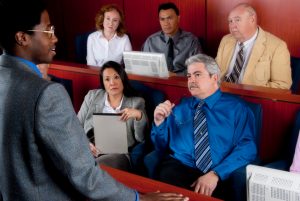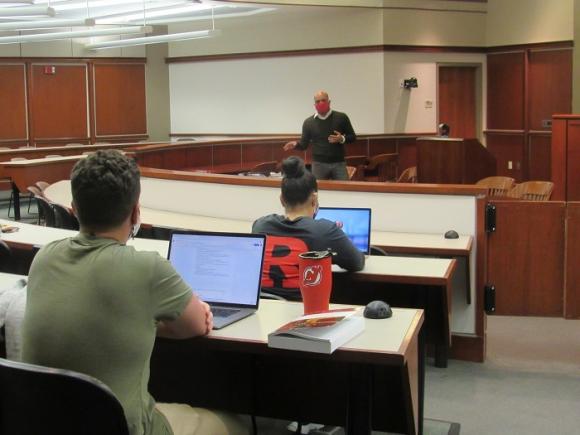From Idea to Courtroom: Steps to Create Powerful and Convincing Trial Presentations
From Idea to Courtroom: Steps to Create Powerful and Convincing Trial Presentations
Blog Article
Browsing the Intricacies of Trial Presentations: Tips for Seamless Shipment and Compelling Debates
In the realm of lawful procedures, the art of test presentation stands as an essential component of success. As attorneys browse the complex web of court dynamics, the capability to seamlessly provide arguments and proof while captivating the court's attention ends up being paramount. The complexities integral in trial discussions require a fragile balance of finesse, ability, and approach. By developing methods that make certain a polished shipment and crafting engaging arguments that resonate with the audience, legal specialists can considerably boost their campaigning for. In a world where persuasion preponderates, grasping the details of trial presentations is not simply a choice yet a necessity for those seeking to prevail in the court.

Comprehending Test Purposes
To efficiently navigate a test, it is critical to have a clear understanding of the objectives that need to be accomplished. Prior to entering the courtroom, legal teams need to specify their objectives and desired outcomes. These objectives serve as assisting concepts throughout the test, forming approaches and affecting decision-making processes.
Comprehending test goals includes a thorough evaluation of the instance, lawful criteria, and the customer's benefits. Trial Presentations. It calls for a precise evaluation of the facts, determining crucial problems, and expecting prospective difficulties. By setting measurable and specific goals, lawyers can customize their disagreements and discussions to align with the desired outcomes
In addition, a clear understanding of trial objectives enables lawful teams to prioritize proof, witnesses, and lawful disagreements efficiently. It enables the growth of a systematic story that resonates with the discretionary, enhancing the general case discussion.

Organizing Evidence Effectively
Having a clear understanding of trial purposes lays the structure for organizing proof efficiently in lawful procedures. By straightening the presentation of proof with the preferred outcomes of the test, lawful teams can strengthen their disagreements and enhance their persuasiveness.
An additional key component in arranging proof properly is establishing a sensible flow. Offering evidence in a meaningful and sequential manner can aid build an engaging narrative that sustains the legal disagreements being made. Additionally, utilizing aesthetic aids such as graphes, timelines, or graphs can even more improve the company of evidence and help in making clear complex connections or series of occasions.
Additionally, making certain that all proof offered is admissible and appropriate to the case is necessary. Irrelevant or inadmissible evidence can take away from the toughness of the argument and potentially harm the integrity of the presenting party. A meticulous review and selection process should be undertaken to include only the most legally sound and impactful evidence in the test presentation.
Crafting Convincing Narratives
Crafting engaging narratives plays a pivotal function in providing convincing debates throughout lawful proceedings. A well-crafted narrative has the power to captivate the audience, evoke emotions, and ultimately persuade the decision in favor of the providing celebration. When building a narrative for a trial presentation, it is necessary to develop a clear story that highlights vital points and connects them in a coherent manner. Begin by outlining the realities of the instance in an engaging fashion, making certain that the series of events is simple to follow. visit this web-site Introduce characters effectively, giving history info that aids the audience understand their actions and inspirations. In addition, including vivid summaries and interesting language can bring the narrative to life, making it much more memorable for the discretionary. By weaving together evidence, testament, and legal arguments right into a natural and influential story, lawful professionals can effectively support for their clients and increase the chance of a positive result in the courtroom.
Understanding Visual Aids
Reliable use visual help is key to improving the influence and quality of trial presentations. Aesthetic help, when utilized tactically, have the you could try these out power to streamline intricate information, strengthen vital points, and leave a long lasting perception on the discretionary. To master visual aids in test discussions, it is crucial to make certain that they are clear, concise, and relevant to the disagreements being made.
When integrating aesthetic help, such as graphes, pictures, timelines, or charts, right into a test presentation, it is important to keep them visually appealing yet expert. The visuals must match the spoken disagreements, supplying an aesthetic representation of the info being gone over without frustrating the target market with unneeded details.
Additionally, exercising with the aesthetic help ahead of browse around these guys time is essential to ensure a seamless delivery throughout the test. Acquainting oneself with the content, transitions, and timings of each visual aid can aid keep the circulation of the presentation and avoid technical problems that might develop.
Providing Impactful Closing Disagreements
A compelling closing debate serves as the end result of a trial discussion, encapsulating the core story and persuading the court and court towards a desirable decision. Begin by laying out the main debates that support your client's placement, emphasizing why the proof presented throughout the trial sustains your story.
Additionally, including psychological allure can further strengthen your closing disagreement. Eventually, a well-crafted closing disagreement must leave a long-term impact, engaging the court and court to rule in your customer's favor.
Verdict
Finally, understanding trial discussions entails recognizing purposes, arranging evidence, crafting stories, utilizing visual help, and delivering impactful closing debates. By implementing these techniques efficiently, lawyers can offer their situation flawlessly and make engaging disagreements in the court. It is essential to navigate the complexities of test discussions with accuracy and skill to achieve success in legal process.
By straightening the discussion of evidence with the desired end results of the test, legal teams can reinforce their disagreements and enhance their persuasiveness (Trial Presentations). To understand aesthetic help in test presentations, it is vital to make sure that they are clear, concise, and relevant to the debates being made
An engaging closing argument offers as the end result of a trial discussion, enveloping the core narrative and persuading the court and court towards a favorable choice. Begin by detailing the main debates that support your customer's setting, emphasizing why the proof presented throughout the test supports your narrative.In verdict, grasping test presentations involves comprehending objectives, arranging evidence, crafting stories, utilizing aesthetic aids, and providing impactful closing arguments.
Report this page